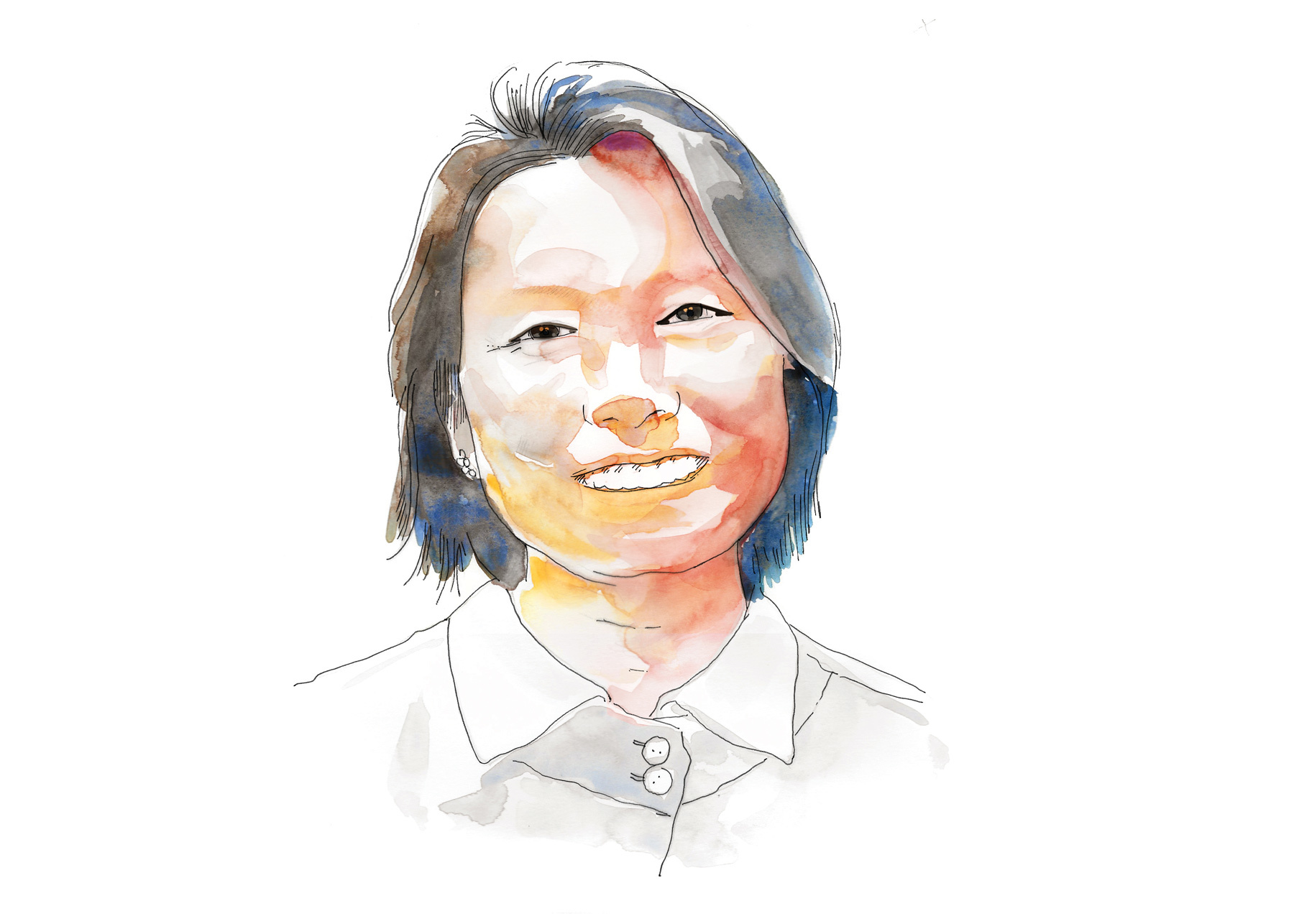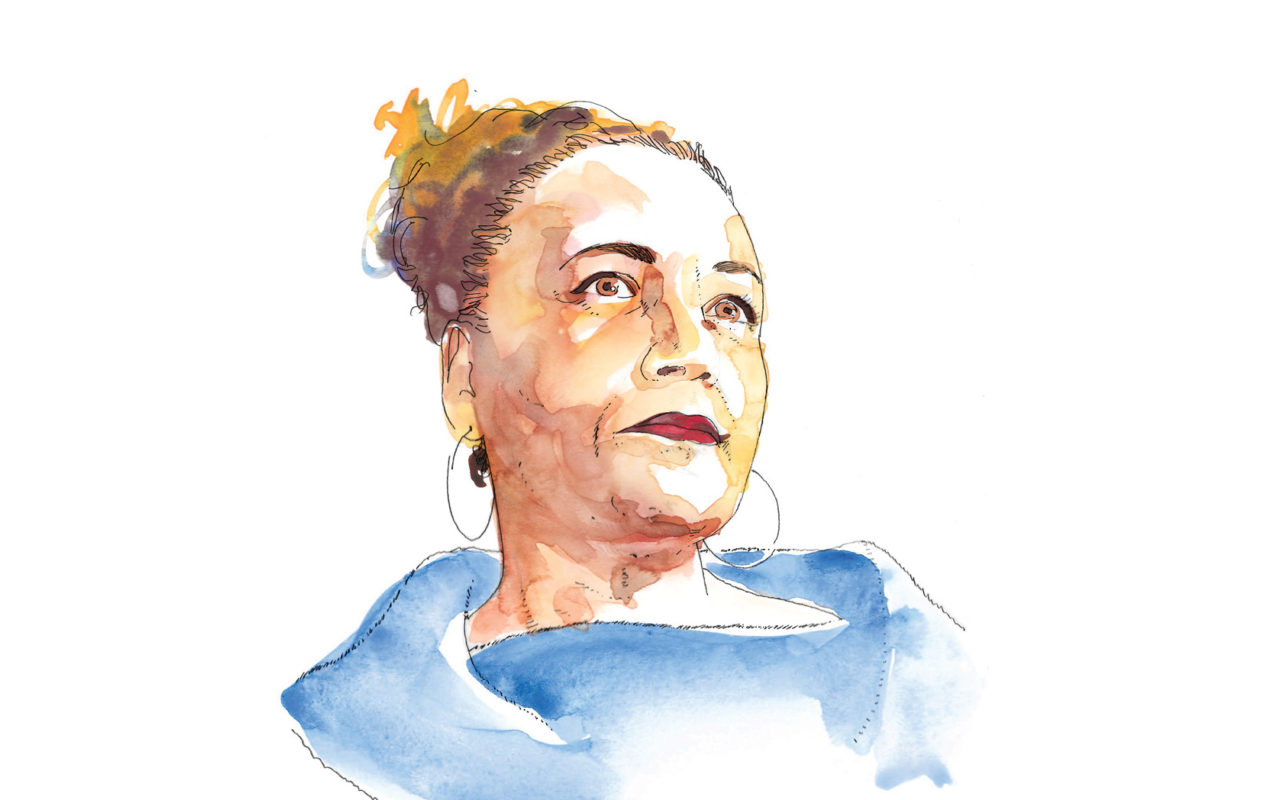
Illustration by Vincent Plisson / Cityscapes
We must design for better ageing
An advocate for the reform of how design engages with elders, Emi Kiyota argues that good design skills alone are not enough
13 Aug, 2020 | Updated 27 Jun, 2021
Designing for older people or even just caring for older people requires humility. You cannot do it successfully if you maintain a paternalist approach to design and how you provide care. You cannot be designing something for them. My work has taught me to sit with the elderly and just listen. That’s how you find out what kind of assistance they need, what they want. Being quiet and listening, which comes a bit easier for me because I grew up in Japan, is a fundamental skill. So, for me, it is easy.
I once visited my grandmother’s nursing home in Japan and asked the staff members where I could find her. No one knew her by name, but everybody knew her bed number—14B—and diagnosis. When I was growing up, she was one of those very wise old Japanese women. At some point, she developed a memory problem—dementia. Not wanting to burden the family, she packed up everything and admitted herself into the nursing home. It was a terrible experience for all of us, especially for her. Within six months, she couldn’t talk. Nine months in, she couldn’t walk. She had lost her will to live. The nursing home made sure she was well fed and kept her physically healthy, but her spirit was completely broken. No one expected her to do anything.
That experience visiting my grandmother and observing her fast decline sent me on the path I’m still walking today. Of course, I was young then and somewhat naive, but I wanted to change the world. I wanted to learn what could be done to change this. That’s how it started.
While studying architecture at the University of Wisconsin-Milwaukee, my mentor—Dr Gerald Weisman—taught me two things that fundamentally changed how I understood ageing and the built environment. He said, “Society shapes how buildings should look like, and architecture reinforces those notions.” My experience at UWM changed how I understood my grandmother’s experience in that nursing home in Japan. It made me realise how we think of older people and their place in society generally. We have this odd idea that it’s okay to warehouse older people.
As designers, we are complicit in this; we are okay with designing environments that are just good enough for older people, even as those that design them would never want to live in them. That’s how we see them, and that’s how we see the buildings they live in—just good enough. Learning this was quite a profound experience. I wanted to challenge this. I wanted to see how we could create a design process that can change how we educate both designers and elders to think about ageing, older people and their environments. This led me to found Ibasho.
After my PhD, I was doing lots of consultancy work designing hospitals and nursing homes. While working on my master’s thesis, I lived in a nursing home for a while. I thought it would allow me to understand the experience of being within that institution. At one point, I realised no one was happy living there. I understood that somehow, we spend so much effort and so many resources designing something no one wants to live in. We are still doing that. That was my turning point. I was shocked how little we listen to older people when we design nursing homes. We think of the experts when we talk about users—the administrators, perhaps the doctors, and nurses—but never the residents, the people who live there. We never trust older people to tell us how they want to live their lives. It’s strange.
That’s when I started to think about creating Ibasho. Ibasho is a Japanese word. It means a place where you feel at home and can be yourself. I liked this word because when I was involved in designing nursing homes, we always tried to create a home-like setting. But home means different things for everyone. Home shouldn’t be one-size-fits-all, really. It’s impossible to create a home. Someone has to make it that.
Of course, there are cultural differences, but when it comes to ageing and how people experience it, the things people worry about when they get older are the same. It’s almost universal. Everyone’s worried about being irrelevant as they age, and they worry about being socially isolated. I see this over and over. I have found that institutional care and how it operates everywhere is pretty much the same no matter where you go. The institutional culture is the same. Any traditional, indigenous cultures get erased in these places when it comes to eldercare. In Japan and other parts of the world, older people are relatively more respected. But, as soon as they move into an institution, everyone treats them as beings they must look after. They stop being seen as individuals with experience, skills and wisdom that can still be useful to society. Geographical culture is one thing, but the institution has created its own perverse global culture.
I started Ibasho as an attempt to address these issues. The main ideas we are working with are that we need an architecture that is incomplete, an architecture that responds and shifts as the needs of its users change. The thing is, what’s accessible at one point of life might not be accessible at another. So, we are advocates for adaptable design, something that says, “If I need one, then I can have this function built-in.” We are for a design that’s flexible enough and adaptable enough for people to age in place.
The second thing we are interested in is who decides? A lot of time, architects are the ones deciding how design should be. I am a huge proponent of embracing imperfection gracefully. That’s what we do for Ibasho. We intentionally, purposefully, don’t complete the building. We ensure it is well-designed and that it is sound enough and safe enough. The interiors are very basic. We leave the users—the older people—to use the space and decide where things will go and how they will use it. When we have put something in place, it’s often been the wrong location. It’s a challenge first for architects to set aside their sense of perfection. It’s difficult for them to say, “Okay, I’m going to stop designing at this level.” But really, who is the user? Who should the space be perfect for? The users should complete the design. They have a better sense of what they want and can define what perfection is for them.
One of the elements of Ibasho is that you must get the user’s hands dirty in their own space. They are part of the creation. We trust older people who use the environments we create to show their creativity and complete the environments we design and build. It’s interesting to see what happens. They own the spaces much more, and are happy with the challenge. I was working on developing senior housing in Bhutan some years ago, and came across a quote that said: “The way to be happy is to make other people happy”. It resonated with me because it captures the gap between our current approach of care and what elders want. In our work, we are committed to making spaces that do this. Elders can be valuable assets and resources to their communities. We want to be part of co-designing a future in which ageing is not something to fear. Architecture can be a powerful tool for not only facilitating meaningful relationships with others. It can also empower elders to find their own “ibasho” through contributing back to their community.
Designing for older people or even just caring for older people requires humility. You cannot do it successfully if you maintain a paternalistic approach to design and how you provide care. You cannot be designing something for them. My work has taught me to sit with the elderly and just listen. That’s how you find out what kind of assistance they need, what they want. Being quiet and listening, which comes a bit easier for me because I grew up in Japan, is a fundamental skill. So, for me, it is easy.
The pandemic has exposed issues about ageing that have been around for a long time. Covid-19 did not create social isolation; it did not create high virus infection rates in nursing homes. These problems already existed. Older people are not the problem either. The big issue is equity, and the pandemic highlighted this. If you look at it, elderly facilities in specific zip codes were much more susceptible to high infection and death rates than others.
We must systematically think about this. Ageing is not a problem; it is not a disease. But we insist on treating it as something negative. We have to shift our views on ageing and how we transform the elder care system. No one likes to live in the elder care settings that we warehouse older people in. Warehousing elders in spaces that are the most efficient as we do now is not the answer.
“Ageing in place” has been a buzzword for many years. Everyone wants to stay at home. I get that, but it’s not always positive. For example, if you have diabetes and can’t go anywhere, and so you just stay at home and do not see anyone, that’s not healthy. We need to start thinking about communities and neighbourhoods as part of a care ecosystem. Suppose we work to transform housing by making it more accessible, both physically and economically, paired with robust home and community-based services. In that case, people wouldn’t have to move because their house is not accessible or unaffordable to live in as they get older.
Another example is developing dementia; most sufferers go into something referred to as “memory care”—terrible words. What happens when you have dementia is you start to lose your sense of orientation occasionally. Could we design neighbourhoods that enable older people with memory problems to walk around safely so they can stay at home instead of institutionalising them? Why are we not doing this? We sent people to the moon decades ago. We are now talking about going to Mars and space tourism, yet we can’t keep our people within their community in their own home?



